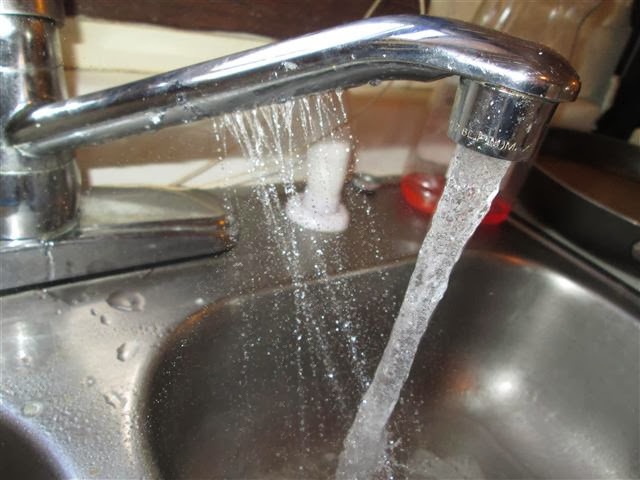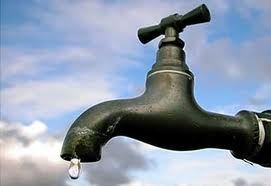How do you actually feel when it comes to Causes and Consequences of a Leaky Faucet?

Introduction
A dripping tap could seem like a small aggravation, yet its effects expand far past the periodic drip. Recognizing the effects of a leaky faucet is crucial for both house owners and the environment. In this post, we'll check out the various effects of this common house concern and why resolving it without delay is vital.
Reasons For Leaky Faucets
Leaking taps can result from a range of factors, consisting of damage, high water stress, and deterioration. In time, the constant use of taps can cause worn-out seals and gaskets, causing leaks to create. Furthermore, excessive water stress can place strain on plumbing components, causing leakages. Deterioration and rust can additionally deteriorate tap components, making them prone to leakage.
Water Wastefulness
One of the most significant consequences of a dripping faucet is water waste. Also a little drip can amount to gallons of wasted water gradually. This not only drives up water costs however also adds to water shortage and environmental degradation. Dealing with dripping faucets promptly is critical for saving this precious source and decreasing its influence on the earth.
Financial Effect
In addition to wasting water, leaky taps can likewise have a significant financial influence. Increased water costs are a straight effect of water wastefulness, costing property owners numerous dollars annually. In addition, the expense of repairing water damages caused by leakages can be substantial, specifically if left unattended for a prolonged period.
Ecological Effect
The ecological impact of leaking taps extends past water wastefulness. By saving water, home owners can add to more comprehensive efforts to minimize water scarcity and secure all-natural communities. Lasting choices such as rainwater harvesting and water-efficient components can better reduce the environmental impact of house water usage.
Technological Solutions
Improvements in technology have caused the development of smart faucets and water-saving tools that aid minimize water waste. Smart faucets utilize sensors to identify activity and adjust water flow appropriately, lowering waste without giving up convenience. Water-saving devices such as aerators and low-flow showerheads are likewise efficient in preserving water without endangering efficiency.
Global Point of views
While dripping taps may feel like a localized issue, they contribute to wider worldwide obstacles such as water scarcity and environment modification. In areas currently facing water stress and anxiety, every decrease counts, making leakage prevention and repair necessary. By taking on water-saving methods and investing in lasting innovations, house owners can play their part in attending to these pressing global issues.
Regulatory Steps
Government regulations play an essential function in minimizing the effect of leaky taps and advertising water preservation. From developing codes that need water-efficient components to water-saving incentives and discounts, policymakers have a range of devices at their disposal. By carrying out and imposing these laws, federal governments can make sure that property owners prioritize water preservation in their lives.
Community Influence
Dealing with leaking taps calls for cumulative initiatives at the neighborhood level. By raising awareness regarding the importance of water conservation and giving resources for leak discovery and repair, neighborhood authorities can encourage property owners to act. Efforts such as water-saving discount programs and leakage detection campaigns can incentivize behavior modification and promote liable water use.
Situation Researches
Real-life examples of the effect of leaking taps emphasize the value of aggressive upkeep and prompt fixings. From water damages to escalating water expenses, the repercussions of neglecting leakages can be serious. By sharing these case studies, property owners can better understand the value of attending to leaking faucets without delay.
Educational Campaigns
Educational projects play an essential function in raising recognition regarding the results of dripping faucets and advertising water conservation techniques. Via workshops, seminars, and on the internet resources, home owners can learn how to detect and fix leaks themselves. By equipping people with knowledge and devices, instructional campaigns can promote a society of responsible water usage within areas.
Wellness Issues
Dripping faucets can produce favorable settings for mold and mildew and mildew growth, presenting wellness risks to passengers. The visibility of mold can worsen respiratory system problems and allergic reactions, specifically in susceptible people. Additionally, water damage arising from leaks can compromise the architectural stability of buildings and cause pricey fixings.
Do it yourself vs. Specialist Fixing
When faced with a dripping tap, home owners typically question whether to try repairs themselves or hire an expert plumber. While DIY repair work can save money, they might not constantly attend to the underlying issue efficiently. Expert plumbing professionals have the experience and devices to identify and fix leakages appropriately, ensuring long-lasting remedies and assurance for house owners.
Preventive Measures
Stopping dripping faucets needs regular maintenance and proactive steps. Simple jobs such as replacing damaged washers and seals can prevent leakages from establishing. Furthermore, upgrading to high-grade fixtures and decreasing water pressure can help lengthen the lifespan of faucets and decrease the risk of leakages.
Final thought
To conclude, the impacts of a dripping tap extend far beyond the occasional drip. From water waste and enhanced water costs to wellness problems and ecological influence, the effects of disregarding leaks can be significant. By dealing with leaky taps promptly and adopting water-saving techniques, homeowners can minimize these effects and add to a more lasting future.
Why You Shouldn’t Ignore a Leaky Faucet in Your Home
What Causes a Leaky Faucet?
Various factors can cause a leak, from loose and worn-out parts to corrosion. Your faucet has four essential components from which most plumbing issues will stem: the O-ring, the valve seat, the washer and the gasket.
What Is an O-Ring?
The O-ring is a stem screw that fastens parts of the faucet in place, preventing water from leaking out of the spout. Depending on your faucet type, the stem might have multiple O-rings. Water will drip from the faucet’s handles and base if this part breaks or deteriorates.
What Is a Valve Seat?
The valve seat controls the flow and temperature of the water. Found at the base of the handle, it works as a seal for the faucet’s stem. The valve seat ensures the water is allowed to flow or is blocked as the handles dictate. You’ll know it’s malfunctioning when water leaks from your faucet’s sides.
What Is a Gasket?
The gasket is found between the water inlet and the valve stem. It creates a seal between the faucet and the sink, holding its joints by aerators attached to the stem’s head. Water will trickle out from the base if the gasket isn’t working.
What Is a Washer?
The washer secures the handles and prevents leakage, serving a similar purpose to the O-ring. While the O-ring is ordinarily round and made from an elastic material, such as rubber, the washer is square-shaped and composed of brass, copper and other hard metals. If it malfunctions, corrodes or has been improperly installed, water will leak out of the handles, causing that incessant faucet drip.
Why Is a Leaky Faucet Dangerous?
A leaky faucet left alone for too long can have significant consequences.
Pest Infestations
Since bugs and rodents gravitate towards the scent of water, a leaky faucet will draw pests to your sink. Both are looking for leaks accessible through crawl spaces, which a faucet provides. If you leave water dripping for too long, you run the risk of an infestation.
Rust
If one of the faucet parts has started to corrode, the resulting rust can spread to your pipes and valves with startling speed. The rust might even lead to cracks or other impairments, resulting in more severe plumbing issues.
Your sink could also sustain damage from a leaky faucet. The water in your tap possesses sparse elements of calcium and iron that can stain your sink with repeated and prolonged exposure. Once those elements in the water have been open to the air for some time, your sink will start to rust, creating marks that can be difficult to remove.
https://www.tomsmechanical.com/blog/why-you-shouldnt-ignore-a-leaky-faucet-in-your-home

We are very focused on Potential Health Risks Associated With Leaky Faucets and I'm hoping you appreciated the piece. Be sure to take the time to distribute this content if you enjoyed reading it. I am grateful for being here. Revisit us soon.